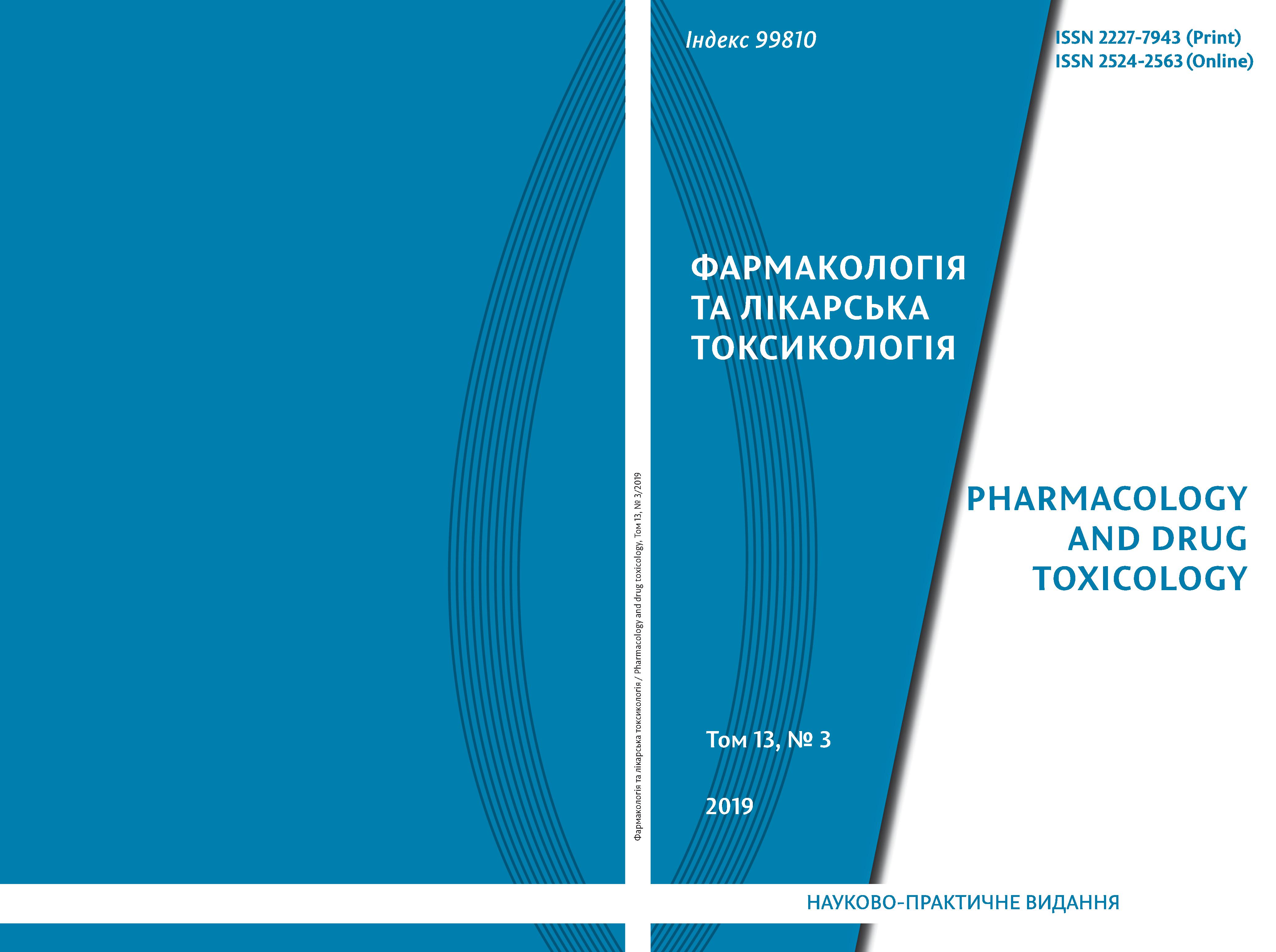Abstract
Purpose of the study to conduct a comprehensive comparative pharmaco-mathematical analysis of the effectiveness of germanium coordination compounds with bioligands in the postcompression period. According to the results of screening of potential drugs for pharmacotherapy of the effects of the crush syndrome (CS). The experimental model of endotoxicosis of posttraumatic genesis was a pathological process that developed in animals as a result of crushing the soft tissues of the hind limbs for 5 hours in a special device with pressure control gauge. Quantitative criteria for pharmacotherapeutic efficacy of the studied compounds under endotoxicosis conditions on the background of CS were concentration of final lipid peroxidation products (LPP) reacting with 2-thiobarbituric acid (TBA-reactants) in the rat liver homogenate and the average weight molecules (AWM) level in rat blood. Correlation «structure – activity» was calculated by the method of least squares. According to the results of a screening series of studies of potential drugs for the pharmacotherapy of the effects of CS, a comprehensive pharmaco-mathematical analysis of the activity of germanium coordination compounds with bioligands was carried out. It had been shown that germanium coordination compounds with a complex organic anion (MIGU-4-6,8,9) exhibit effective detoxification of the body under CS. The maximum ability to reduce the content of universal markers of endogenous intoxication was shown by compound (MIGU-6), after its administration the AWM level decreased by 2 times, and the concentration of TBA-reactants – by 4.4 times compared with the control group. It was found that there was a dependence between the concentration of TBA-reactants in the rat liver homogenate and the AWM content in the rat’s blood serum, correlation (determination) coefficients of which changed insignificantly when comparing different groups without thiotriazoline and those containing thiotriazoline, for example, the linear correlation coefficient for group A and group A1 was 0.986 and 0.908 respectively. The data obtained indicate the correctness of the choice of thiotriazoline as a comparison drug in the conditions of the studied extreme state, and can serve as a pharmaco-mathematical rationale for the feasibility of its use at the stage of clinical studies. The dependence of the AWM level and TBA-reactants on the number of acceptors and donors of the hydrogen bond, the dipole moment, the energies of van der Waals and electrostatic interactions is characterized by indicators – correlation and determination coefficients (rxy, R2) of different levels. For the AWM indicator, the most characteristic is the correlation with hydrogen bond acceptors (rxy = 0,931, group C), while for TBA-reactants, the bond with hydrogen bond acceptors is characterized by the value rxy at the level of 0.481 (group C).
